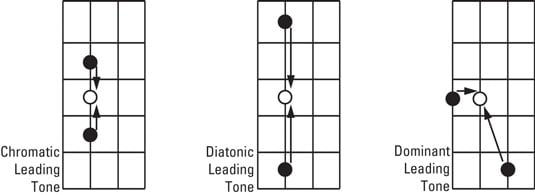If you know how to create a walking bass line, you can be more creative in your jazz playing. A walking bass line is a more creative form of bass playing than the other swing styles because you choose new notes each time you play the same song.
A walking bass line simply walks through the appropriate scale of each chord, one note per beat, hitting every beat of each measure. The walking bass line was developed by upright bassists like Ray Brown, Milt Hinton, Paul Chambers, and Ron Carter, but now it’s also commonly played on the bass guitar.
Creating a walking bass line is one of the more elusive art forms in the bass world, but if you understand how to put it together, step by step (pun intended), it won't seem so frightening. The formula for a successful walking bass line is simple:
Beat One: Determine the chord tonality (major, minor, dominant, or half-diminished) and play the root of that chord.
Beat Two: Play any chord tone of the chord, or any note in the scale related to that chord.
Beat Three: Play any chord tone or scale tone of the chord.
Yep — same as Step 2, but try to pick a different note.
Beat Four: Play a leading tone to the next root.
A leading tone leads from one chord to the next. The leading tone prepares the listener’s ear for the sound of the new chord. The most important point to understand about a leading tone is that it aims for the following chord’s root. For example, if you’re going from a C chord to an F chord, your leading tone leads to F (never mind the C).
Leading tones come in three types:
Chromatic (half-step)
Diatonic (scale)
Dominant (the 5 of the new chord)
The following figure shows the location of each type of leading tone. The root of the new chord is represented by the open circle; the leading tones are represented by the solid dots. The arrows show which way the leading tone moves to resolve to the root of the new chord.

You can walk through almost any jazz tune. To demonstrate the jazz walking style properly, the following figure shows you how to walk in a jazz blues progression. In the figure, the chords are printed above each grid. The modes for each chord are clearly marked, and the leading tones are the last note in each sequence (follow the arrows). You can start this progression on any root. This blues progression is written in Bb, but if someone asks for a jazz blues in C, just move the whole pattern up two frets (toward the bridge of the bass) and start your first note on C.
By the way, playing this pattern is easy (despite the complex sound) because you don’t have to shift your left hand. Just make sure that you start the pattern with your middle finger.


